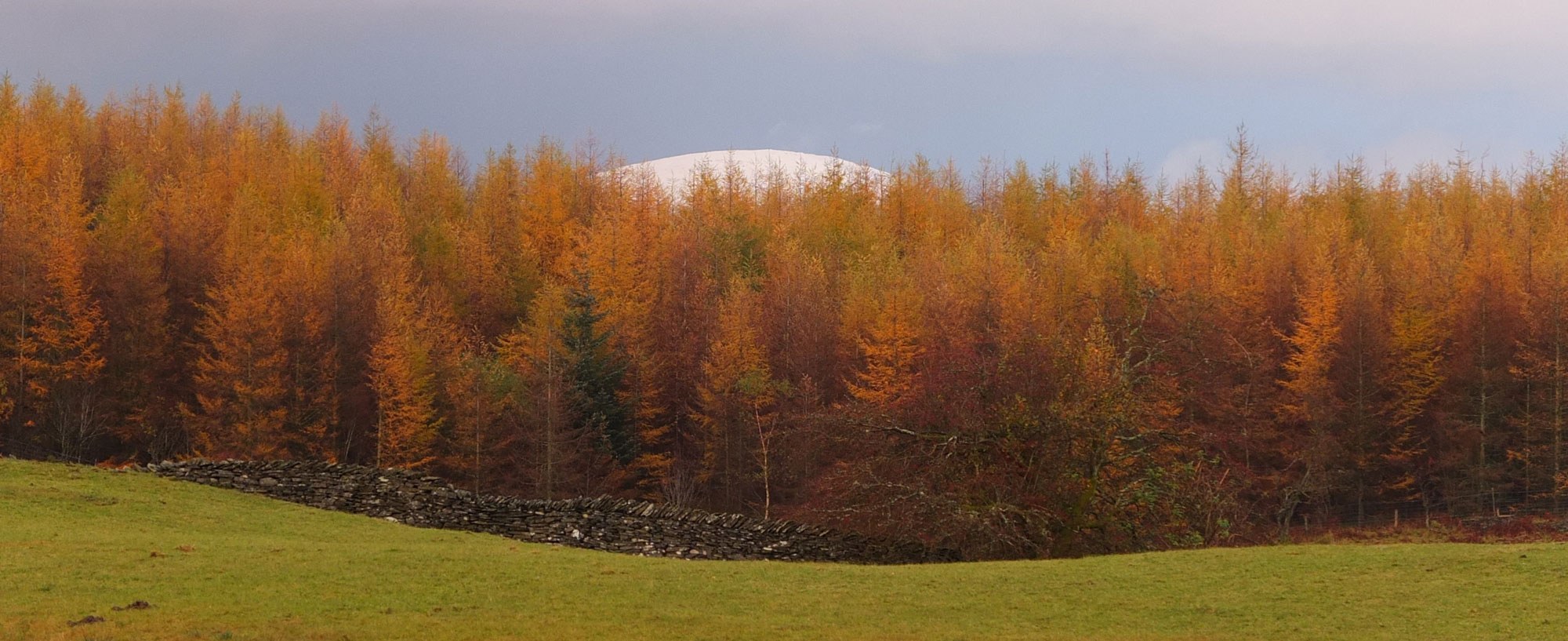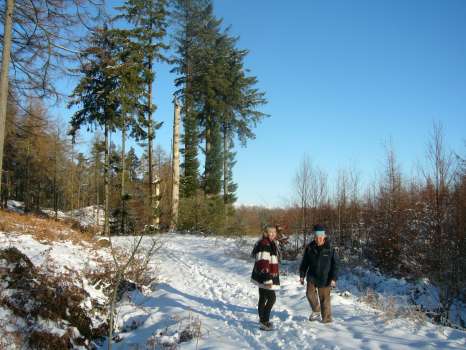After watching Judi Dench’s delightful portrait of trees at her home in Surrey on the telly last week (link to program), I got to thinking about some of the notable trees we have here at Yewfield. It is difficult to choose as there are so many but a few stand out. Not just because they are amazing specimens but also because of the stories they hold. I’ve chosen five trees to look out for next time you are up this way. How can one not share Judi Dench’s passion for trees?
- Oak: Judi Dench’s favourite tree and the one around which most of the tv programme revolved was a two hundred year old beauty. They say about oaks that they take four hundred years to grow, four hundred years to die and four hundred years to fall. That may be the case in Surrey but up here they have a harder time. Still we have some notable oaks at Yewfield. There are some veteran specimens in Sawrey Ground Plantation covered in moss and polypody ferns, an enormous double stemmed oak along the stream below the tarn and a beautifully positioned tree in High Field with a fabulous view to the eastern fells. My favourite however is along the stream above the tarn. You have to look for it but it is well worth the trouble.
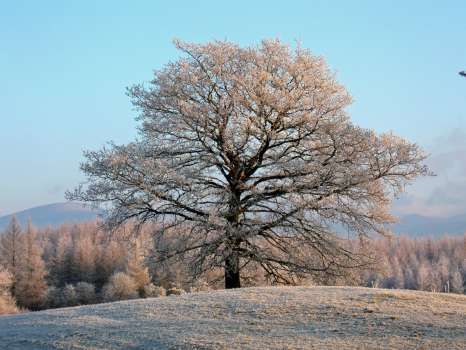
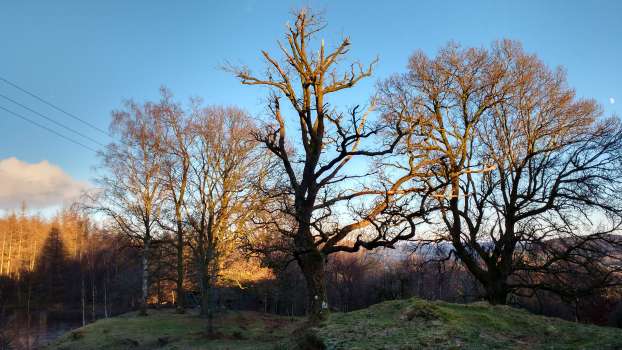
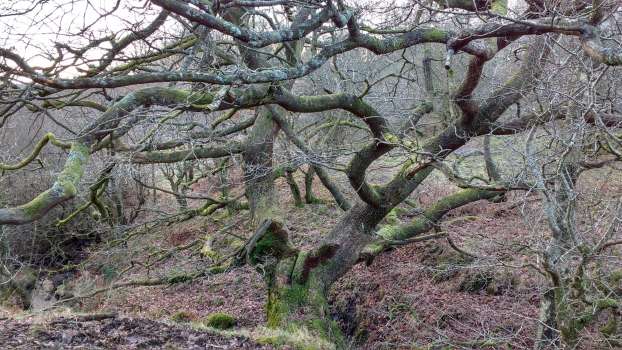
- Yew: We have five mature yews in the garden in front of the house and of course the property is named after the tree. The wet Atlantic oakwoods native to this part of western Britain can often have the odd yew tree growing among them. Yewdale, just west of us near Coniston, boasts three farms with the name - Low Yewdale, High Yewdale and Yew Tree Farm. There was a famous 1000-year old yew tree that lived in the valley until a century ago. I especially like the yew tree along our drive. We estimate that it is about 200 years old but yews are difficult to age as they are very slow to grow and eventually rot out in the middle.
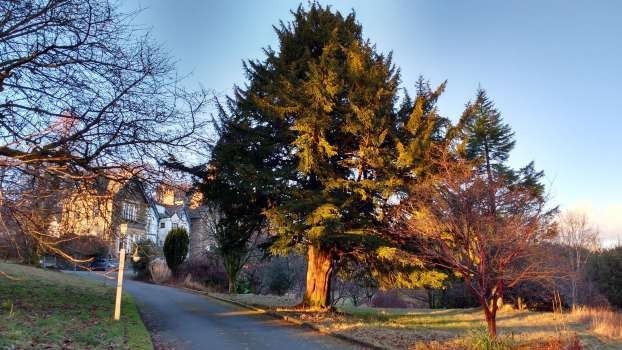
- Sitka spruce: You may well ask what is that ‘blot on the landscape’ tree doing on our list of favourite trees. Sitka spruce has rightly got a bad reputation as we often see them in rectangular groups plopped on the side of a hill looking completely alien in this landscape. The Sitka spruce here at Yewfield are blended in with larch and other trees in a mixed wooded landscape so are not too unsightly. They are still by far the most important forestry tree in Britain so will continue to be grown as a plantation tree but do need to be carefully placed in the landscape. As you enter our wood from the Tarn Hows road there is a small group of tall mature sitka spruce that were saved from the axe. These trees are about 60 years old. In Canada they can grow to be 600 yrs old and imagine the size of them over there.
- Dawn Redwood: We have two fine specimens of Dawn Redwood in our garden. They are two of the first to be planted in the north of England as a previous owner of Yewfield was good friends with the head forester of the Forestry Commission's Grizedale estate. He was given some of the first introductions of the tree in this country to see how they would manage up in the Lakes. Metasequioia glyptostroboides was thought to be extinct until it was identified by botanists in China in 1946. Seed was sent to Britain and America shortly afterwards, and all dawn redwoods in the UK originate from them. We estimate that our trees were planted in the mid to late 50s.
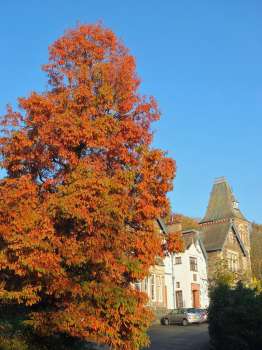
- The Hupeh or Tea Crab: In our orchard in front of the house we have a collection of apple trees that are suited to northern climes. Most are cookers as they are hardier and less disease prone but in a wetter bit of the slope we have planted three Hupeh or Tea crabapples. These trees are native to the province of Hubei in China and were discovered by the famous plant hunter E.H. Wilson at the turn of the last century. They blossom profusely, which our bees love, and produce little bright red fruit that are devoured by thrushes and blackbirds in the late fall and early winter. Their real bonus for gardeners though is that they are one of the only apple trees that grow happily in wettish soils.
Go back to all blog posts or read the next entry in our blog here →
You can also read the previous blog post here.
